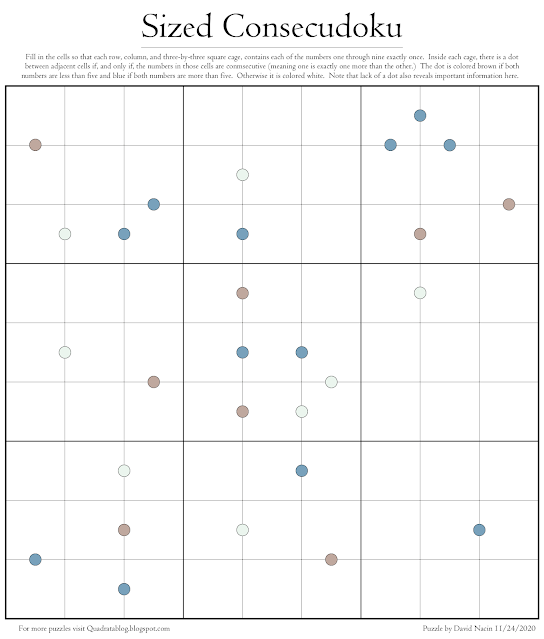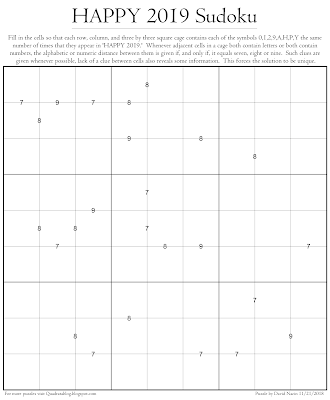Sized Consecudoku
Here, a dot is placed between cells of the same cage if, and only if, the numbers in those cells are consecutive. This means they are one apart like 3 and 4 or 8 and 9. The color of the dot tells you about the size of those numbers. Blue means both are more then five, red means both are under five, and white otherwise. That's all you need to play.
Remember that with all "if and only if" style clues, lack of a clue between cells of the same cage also reveals some important information. This is necessary in order to solve this puzzle.
This definitely isn't one of the harder puzzles here. In fact, I've tried making puzzles with these rules on smaller boards but, this rule set seems to be a bit too trivial until you get to boards of this size. It's convenient that it snaps out of triviality at this point as most people are used to nine-by-nine sudoku anyhow.
There's a reason I allow the clues to do two things here. If you remove the colors from the dots, two things happen. First you lose the ability to get a unique solution. There are at least two, since you can map 1 to 9, 2 to 8, and so on to always find at least one more answer. This can be fixed by revealing any cell which is not equal to 5, or in a number of other ways. The other thing is that for the colorless versions that do have only two solutions, finding those solutions is a bit brutal. It's past the point where I'd consider it fun for most people. It is interesting that it is possible to make them, but I feel that some other type of hint, like the colors shown here, is necessary for these puzzles to be fun.
I'm including a black and white version below for those who don't have access to color printing, together with the solution and a PDF version as well.




Comments
Post a Comment